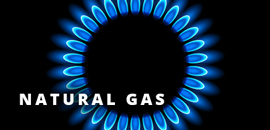PROGRESS REPORT
While our agency has always been prudent in monitoring and managing energy costs, no specific percentage reduction goals are in place. We believe we have implemented all available cost-effective measures, and any subsequent reporting will indicate no change in status. Combined, electric, water and sewage bills for the prior three fiscal years have been consistent, averaging $5,307 ($442/month), with a high annual amount of $5,627.35 and a low annual amount of $5,017.33. Furthermore, cost saving measures that are in place include motion sensing lighting which turns off lights when not in use, conservation measures including the setting of heating and cooling temperatures to reduce usage, use of window coverings and low energy-use bulbs in light fixtures. Furthermore, our agency promptly addresses plumbing related issues to avoid excessive water flow, and our landscaping is drought resistant and low-maintenance.
GOALS
MD Anderson’s energy and sustainability programs are dedicated to the identification, evaluation, funding and implementation of cost-effective utility and waste reduction programs and projects throughout our facilities. The institution’s commitment to energy savings and sustainability goals supports the environment and conserves our financial resources, both of which are contributions toward MD Anderson’s mission to eliminate cancer.
In 2001, The University of Texas System Board of Regents established a goal of reducing energy consumption by 10-15 percent by the end of fiscal 2011. This reduction goal was extended in 2011 by an additional 5-10 percent with a new end of fiscal 2021 target date. MD Anderson’s EUI as measured by total BTUs per square foot remained flat in the 10 years prior to 2002.
MD Anderson accomplished the Regents’ goal three years in advance of fiscal 2011, and energy reduction had reached over 30 percent at the publishing of a new Energy and Sustainability Strategic Plan in 2013. This plan further defined MD Anderson’s mission to identify and implement cost-effective utility and waste reduction programs throughout our facilities. The strategic goals in this plan included reducing EUI by 7 percent against an fiscal 2012 baseline and increasing annual pounds of solid waste recycling against an fiscal 2013 baseline.
Both the energy and recycling goals in the 2013 Strategic Plan were met before their expected measurement dates. Furthermore, related to the UT System Board of Regents goal ending fiscal 2021, MD Anderson has reduced and sustained its energy consumption per square foot nearly 40 percent compared to the original 2001 baseline.
Our Energy and Sustainability Strategic Plan’s mission and vision guides our programs to constantly focus on minimizing waste and optimizing efficiency. MD Anderson submits as evidence the information in Progress Report and Goals sections of this report, as well as the utility data submitted in the annual Energy Utility and Water Data (EUWD), that our institution has exceeded the requirements detailed in Texas Government Code Section 388.005.
MD Anderson targets BTU reduction instead of electricity reduction as a better measure of our energy conservation progress. One of the primary reasons is that MD Anderson purchases much of its thermal energy requirements from a district chilled water and steam plant, so electric and natural gas reductions are achieved indirectly through our heating and cooling consumption conservation. Starting in fiscal 2023, MD Anderson will also target Scope one and two greenhouse gas emissions for reporting of environmental stewardship. The table below shows the energy goal in place for UT System institutions. Concurrent with the energy goal, UT set system-wide goals to reduce water consumption 3-5 percent (GAL/GSF) during each 10-year period. MD Anderson’s gallons per square foot reduction during this period was 63.2 percent against the 2001 baseline. MD Anderson does not currently have a reduction goal in place for transportation fuels.
Sept. 1, 2021, marked the end of UT System’s second 10-year challenge period, and the adoption of the third 10-year goal period was approved on April 21, 2021. Similar to the previous two UT System energy goals, this third 10-year goal continues to maintain a 5 percent base goal and a 10 percent stretch goal.
STRATEGY FOR ACHIEVING GOALS
3.3.1 Organizational Commitment
MD Anderson pursues energy conservation and sustainability through a collaborative effort of cross-functional teams supporting each mission area of the institution. MDA’s commitment to stewardship of the principles of energy efficiency and sustainability are promoted through two strategic level teams: The Energy Core Team and the Energy & Sustainability Strategy Team.
The Energy Core Team (ECT) is composed of senior facilities management leadership including the Chief Facilities Officer and Vice President of Facilities Management (FM); Associate Vice Presidents for Research and Administrative Facilities (RAF), Patient Care & Prevention Facilities (PCPF), Environmental Health & Safety Sustainability and Emergency Management (EHSSEM), Engineering & Building Systems Management (EBSM), and Facilities Management Business Services (FMBS); the Director of Engineering Construction Services; and the Director of Energy and Utility Programs. The ECT meets every quarter to discuss energy goals and trends, share best practices, approve resources for energy conservation measures, and set of priorities related to policy and resource application. This core team is also responsible for tracking the energy portion of the Strategic Plan goals.
The Energy & Sustainability Strategy Team is composed of key contributors and program owners of the Energy & Sustainability Strategic Plan. This team meets monthly to discuss progress against existing goals and to plan future activity. In addition to this team, a Solid Waste and Recycling Committee composed of EHSSEM, Environmental Services, Parking and Transportation, Materials Management staff and Facilities Customer Advocates was developed to discuss the challenges and opportunities with sustainability with frontline staff. This committee meets quarterly to increase recycling awareness, review opportunities for improvement, and share innovative ideas.
In support of our energy and sustainability efforts, MD Anderson building directors have included in their position descriptions the following responsibilities:
Monitors and manages the energy performance of assigned buildings.
Takes appropriate actions to ensure buildings perform within set targets.
This structure formally expands the energy conservation and efficiency improvement team to include the building operations and maintenance personnel, which facilitates energy conservation as part of daily operation. Energy sub-teams exist at each operations team level. These teams include maintenance supervisors, building operations leadership, Engineering, building automation, and Energy Management. The Energy Management and Engineering teams also create, maintain, and promote energy training and analytic tools so our building operators can gain ownership of this important function.
3.3.2 2021 Strategic Plan Document
MD Anderson’s core values of Caring, Discovery, Integrity, Safety and Stewardship require that we protect our community now and for future generations, safeguard our natural and financial resources, and seek to improve areas we impact as we work to cure cancer.
MD Anderson has a long history of more than two decades of energy and sustainability planning and conservation. We have reduced our total energy consumption per square foot by almost 40 percent, which more than doubles state mandates, and increased our annual pounds of solid waste recycling to over 25 percent during this period. We continue to go beyond the basic business case for energy and sustainability programs and strive to be innovators in sustainable building design and efficient operation in our new Energy and Sustainability Strategic Plan.
The success of the Energy and Sustainability Strategic plan will be defined by progress across four inter-related pillars: Education, Measurement, Conservation, and Sustainability. The overarching goals in the plan were developed to align with these four pillars, described in more detail below.
Education
The Education pillar highlights communication, engagement, and culture focused on energy and sustainability. Its first goal is to engage staff to produce a culture of energy efficiency, sustainable practices and transparent operations. This goal will be accomplished by identifying and engaging champions and promoting energy and sustainability tools that can be used by anyone in the institution. The second goal in the pillar is to promote energy and sustainability efforts. The purpose of this goal is to make our efforts known both inside the institution and outwardly to the community. It is important to make MD Anderson’s energy and sustainability endeavors known because of their synergy with the institution’s vision and to foster a culture that continuously exceeds regulatory compliance.
Measurement
The Measurement pillar is dedicated to understanding and making available the institution’s consumption and estimating savings from mitigation efforts. This pillar is the key to all energy and sustainability efforts because it is impossible to know our impact without defining use before and after implementing programs and projects. The first goal of this pillar is to quantify and communicate MD Anderson’s consumption and recovery by building or functional area. The objectives of this goal are twofold: (1) measure, analyze, and report demand and consumption and (2) create a robust program to maintain measurement devices such as submeters. The second goal of this pillar is to pursue new measurement and metrics opportunities. In this goal, MD Anderson commits to exploring programs such as Energy Star and Practice Greenhealth, monitoring emerging technologies and metrics, and evaluating life cycle assessments for minimizing waste.
Conservation
The Conservation pillar encompasses goals related to reducing consumption and waste. Conservation is the main driver of this strategic plan. A healthier environment contributes to healthier people and the reallocation of funds that would be budgeted for utilities and waste disposal to activity directly related to our institution’s mission to cure cancer. Our first goal in this pillar is to prioritize opportunities by making data driven decisions. We will do this by supporting resource prioritization, continuous monitoring and retro-commissioning and seeking input from all stakeholders. The second goal is to create a robust sustainable purchasing program. The objectives of this goal are to promote conservative purchasing practices and establish a renewable energy strategy. The final goal is to build efficient, high-performance buildings that limit environmental impact. We expect our high-performance buildings to apply energy and water efficient design practices, utilize energy modelling for design alternatives and prioritize recycling efforts during construction and renovation.
Sustainability
The Sustainability pillar is where energy and sustainability efforts are turned into everyday practice. The first goal is to commit to efficient operation in daily activities by establishing operation and maintenance procedures and setting up processes to track inefficient operation. The second goal is to make sure to convert successes into sustainable practices. By utilizing monitored-based commissioning and committing to continuous improvement, we can ensure our proven actions for reductions will not regress back to previous practices. The third goal in the Sustainability pillar is to commit to a comprehensive reduce, reuse, recycle program which captures our desire for a flexible program that supports current internal waste recovery and explores new developments in recycling practices.
3.3.3 Strategies for Success
Our goals are far reaching both within and outside the institution, so evaluating each task and developing detailed plans to accomplish them will be crucial to our strategic success. Our Energy & Sustainability Strategic Plan’s framework is created to promote a collaborative approach to energy and sustainability activities. The plan contains ten goals aligned to the four pillars described above. Within these goals are 26 objectives with 91 total tasks. These strategic plan tasks are tracked in detail using MS Planner and available to all collaborators to interact.
IMPLEMENTATION SCHEDULE
For the purposes of this report, the progress against our goals, objectives and tasks are summarized each year in the Progress Report sections above. The following is a list of large active projects scheduled for work in fiscal 2023. It is expected that several other smaller measures will be implemented as well.
• CRB Energy Project.
• SCRB1 Laboratory Setbacks.
• SCRB1 and SCRB2 Boiler Replacements and Heat Recovery Chillers.
• SCRB1 and SCRB2 Microgrid Study and Generator Replacement.
AGENCY FINANCE STRATEGY
3.5.1 Funding Mechanisms for Energy Conservation
MD Anderson utilizes two work streams to provide an opportunity to fund and implement energy efficient measures. The first one is directly based on energy driven projects. These projects need to align themselves with MD Anderson’s energy initiatives strategy and meet payback thresholds for them to be part of the respective annual budget. Energy conservation measures are generally measured against the financial target of a simple investment payback of five years or less (20 percent ROI). In most cases, MD Anderson utilizes in-house resources and pursues the low or no capital ECMs that might be available through retrocommissioning or similar optimization or waste reduction processes.
The second work stream involves Facility Management’s capital plan. This plan is based on an asset management strategy that considers the lifecycle of respective items and operational issues. Projects are ranked based on an internal scoring sheet and are then evaluated to see if they become part of the respective annual budget or deferred to a future fiscal year. The scoring methodology considers factors such as safety, regulatory code compliance and operational impact. While these projects are not 100 percent energy driven, they do contribute to the overall impact of our sustainability goals, thus design, operational use and using the latest technology (as appropriate) influence energy consumption.
For ECMs that require capital funding, two mechanisms are available: the CRR/FRM funding or funding from the Energy Rebate Account.
CRR/FRM Funding:
Capital Repair and Replacement (CRR) and Facilities Repair and Maintenance (FRM) are funding categories that MD Anderson has available on an annual budget basis differing by capital or maintenance accounting criteria and category. Proposed ECMs must compete with other institutional needs to obtain funding priority from this source.
Energy Rebate Account:
The Energy Rebate Account was established as a collection point for funds MD Anderson earns from utility rebates for energy efficiency improvements or participation in the demand reduction programs that exist through local energy distribution companies and ERCOT (as explained in more detail in the following section). MD Anderson collects approximately $800 thousand/year. between the utility rebate programs described below combined with some recycling revenue.
3.5.2 Program Funding from Utility Rebate Programs
MD Anderson has been an active participant in CenterPoint’s Healthcare Energy Efficiency Program (HEEP), Data Center Energy Efficiency Program (DCEEP), and Standard Offer Program (SOP) for many years. CenterPoint Energy’s HEEP program team has worked closely with our energy team identify and validate potential eligible energy efficiency opportunities in both new construction projects and retrocommissioning.
3.5.3 Program Funding from Demand Response Programs
MD Anderson operates over 50 MW of emergency stand-by power to ensure that patient care and research programs are not interrupted by loss of off-site power during emergency conditions, such as hurricanes, etc. Demand response programs refers to mechanisms that encourage consumers to reduce electricity usage during times of peak demand for the utility power system. These programs allow end-use electric customers to reduce their peak electricity usage during times of critical loads in response to utility power system reliability and financial incentives.
The EBSM team manages this program. MD Anderson utilizes two programs to maximize benefits and payments:
Direct contract with CenterPoint Energy for the summer program.
ERCOT participation for the remaining months, facilitated by a UT System consultant.
EMPLOYEE AWARENESS PLAN
3.7.1 Staff Training
As the sophistication of building systems and controls increases, the need to spend time educating staff on how to interact with these systems to achieve efficient outcomes is essential. The tools and techniques for efficient operations often require the staff to unlearn past practices for operating systems.
Regular meetings are scheduled to review activity, trends, and any associated adjustments made affecting energy. Changes to set points and overriding controls can have significant impacts on system efficiency and occupant comfort. While the need to periodically override and adjust systems due to unforeseen failures exists, strategies to minimize these overrides have resulted in lower annual energy consumption.
To support these responsibilities, training is offered to the operating and maintenance teams on how their work affects energy use and on the use of energy tools. In addition, the O&M teams were encouraged to participate in free specialty training provided by Energy University.
3.7.2 Energy Champions
Beginning in fiscal 2019, each operations team selected an Energy Champion to take the lead on energy efforts. The Energy Champion is someone who understands critical energy drivers for buildings and the effect of operations changes to those systems. The Energy Champion’s key responsibilities:
Routinely reviews energy tools.
Triages energy fault indicators to appropriate resource
Advises on and suggests energy and water conservation activities, as well as opportunities for team energy training.
Suggests energy tool enhancements (e.g., additional KPIs, daily trends).
In alignment with the goal pillars established in the Energy and Sustainability Strategic Plan, each Energy Champion has at least one energy tool goal, one energy conservation measure goal, and one educational goal. At least once a year, all the Energy Champions meet to discuss opportunities across all MD Anderson buildings. Energy Champions will continue to serve until a new champion is identified for the O&M group.
3.7.3 Energy Tools
MD Anderson has developed tools for use in support of energy trending, dashboards, and usage metrics. These real-time, daily, monthly, and annual tools are essential to managing the energy performance of buildings. Each provides a prospective that will assist in prioritizing energy related retro-commissioning, as well as managing day-to-day operation of key energy consuming equipment. Recurring meetings with each operations group and energy team include the education for the use of these tools.
EnergyCAP (Monthly Energy Tool)
EnergyCAP is a utility invoice management software that allows for powerful energy management insights at the building area, mission area, and organizational level. While it is the central database for processing MD Anderson’s approximately 300 monthly utility invoices, it has been configured to include MD Anderson owned submeters and the interval data from those meters. Since utility accounts can serve an individual building or a building group, this configuration allows dynamic power views to be made available for each operations team that be reviewed from the mission area level down to the meter level. There are a variety of dynamic reports including EUI (energy per square foot), monthly use and cost trends for each commodity, place performance comparisons for benchmarking, and commodity performance. EnergyCAP data is stored in a SQL database and can be queried and used as a data source for other energy tools. The software has powerful external dashboarding capabilities. These dashboards have been incorporated into established channels for MD Anderson energy teams in Microsoft Teams and on SharePoint.
KPI Fault Detection (Daily Energy Tool)
Key performance indicators (KPIs) and daily energy fault reports have been developed in-house for six major buildings. The reports identify possible energy waste occurring at the buildings daily so that O&M personnel can address and correct the equipment issues causing the waste on a much quicker time basis. Because the reports record and archive energy related faults by system, historical daily energy records are created at the building system level. The tool is also useful to sustain new conservation measures.
Automated reports and links to the analysis are emailed daily to operations, engineering, and energy stakeholders.
Energy Pulse (Daily Energy Tool)
Daily energy pulse and trend graphs were established using data from the building automation system (BAS) and automatically transmitted to key O&M and engineering staff for use in identifying possible changes in building energy usage as modeled against outdoor air conditions. Automated reports specific to each mission area are emailed for each building to the respective stakeholders daily. The utilization of these reports led to improved response to shifts in energy use and have provided some automated measurement and verification of conservation activities in buildings. These reports also help troubleshoot meter or controls issues not directly related to building performance.
The reports are also used to support the move from time-based to performance-based PMs. Examples are weekly graphs in the reports that show HVAC filter differential pressure, which is used by the operations team to track filter performance, gain confidence that the filters are performing as expected, and optimize replacement activity.
These tools are used monitor systems that are known sources for potential energy waste, such as open fume hoods and malfunctioning humidification valves.
Automated Fault Diagnostics and Building Analytics
In addition to the in-house energy tools, MD Anderson has also deployed a third-party cloud-based analytic tool (Clockworks Analytics) that provides deeper HVAC diagnostics, advanced trending, and task management. This fault diagnostics software takes detection of HVAC issues further by creating a digital model of equipment that includes metadata categorizing system and sensor relationships. This system data is built using control sequences and mechanical schedules.
Chilled Water Plant Optimization Software
MD Anderson’s South Campus contains eight distinct and submetered building areas that are served by the four chilled water (CHW) plants distributed along a CHW piping loop. The plants, totaling 12,800 tons in capacity, have cooling loads that range from 200 tons in the coldest winter weather to 7,500 tons in the peak of summer. As part of a coordinated energy project, the plant sequences and global pumping strategy was fully rewritten and commissioned as a complete system. A Niagara-based optimization software engine is in place that provides a fully automated and optimized system. This software utilizes equipment models, operating curves, and known constraints as well as real-time inputs of actual cooling capacity and outside air wet-bulb temperature to determine the equipment combination that results in the lowest total system power demand. The optimization engine then sends stage up/down commands to the plants to efficiently meet campus cooling demands.
Microsoft Teams and SharePoint
Microsoft Teams has been recently adopted as a collaboration space for MD Anderson’s operations teams and conservation activity occurring at each mission area. Action items, meeting notes, ECM lists, and energy dashboards have been configured in public channels for the teams to utilize.
Section 4: Tenant Agency
Progress Report
The Progress Report Section must outline the progress of the implementation of projects from the previous Energy and Water Management Plan or Resource Efficiency Plan (if applicable), including a summary of the results of the projects in terms of utility efficiency and cost savings.
Click to enter your agency’s Progress Report.
Transportation Fuel Consumption (if applicable)
Does your agency maintain one or more state-owned vehicles? Choose an item.
Does your agency report its fuel usage via the Texas Fleet System? Choose an item.
Employee Awareness Plan
The Employee Awareness Plan Section must outline how the agency will make employees aware of direct utility consumption. Plans might include employee training, signage or recognition programs.






